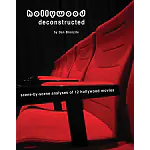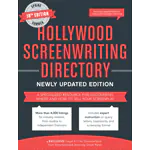Tag: creative writing
Pacing is Often the Key to a Successful Screenplay
To help you understand story pacing and how to write a script that keeps the reader turning the page it may help to think of your screenplay as a…
Don’t Get Stuck on an Unresolved Plot Point
Writers’ Block — It’s a killer We’ve all been there, happily tapping away at the keyboard at our latest and greatest movie script in a creative stream of consciousness…
Montage Sequence – Friend or Foe?
Instead of writing a bunch of short scenes with little or no dialogue as separate steps in your story, why not group them together in a sequence and count…
Remember the Golden “Rule of Three” for Writing
I know some of you writers out there – yes, you know who you are -- don’t like rules and formulas and are ruthlessly resistant to following any kind…
Conflict is the Key to Writing a Good Story
Nothing in life is easy, so why should “movie life” be any different? Whether you are writing a drama based on true life events or a science fiction movie…
Stick to your strengths when screenplay writing
If you want to make it big in the world of professional screenwriting, you are by no means alone. Whether you are a student of creative writing or a…
Script It! Hits the Mac App Store
18 February, 2011 (London, UK) -- UK technology company Nuvotech announced today that its new cross-platform creative writing software Script It!™ for Mac and PC is now available on…
Nuvotech Invites People to Unlock Their Imaginations with Script It! Creative Writing Software
February 11, 2011 (London, UK) -- UK technology company Nuvotech, known for its professional screenwriting software Movie Outline® and innovative cloud service for script reading and coverage Hollywood Script Express,…
Script It! Scriptwriting Software Released
September 13, 2010 (London, UK) -- UK software publisher Nuvotech today launched a new "lite" version of its popular professional screenwriting software Movie Outline®. This new cross-platform creative writing tool…



